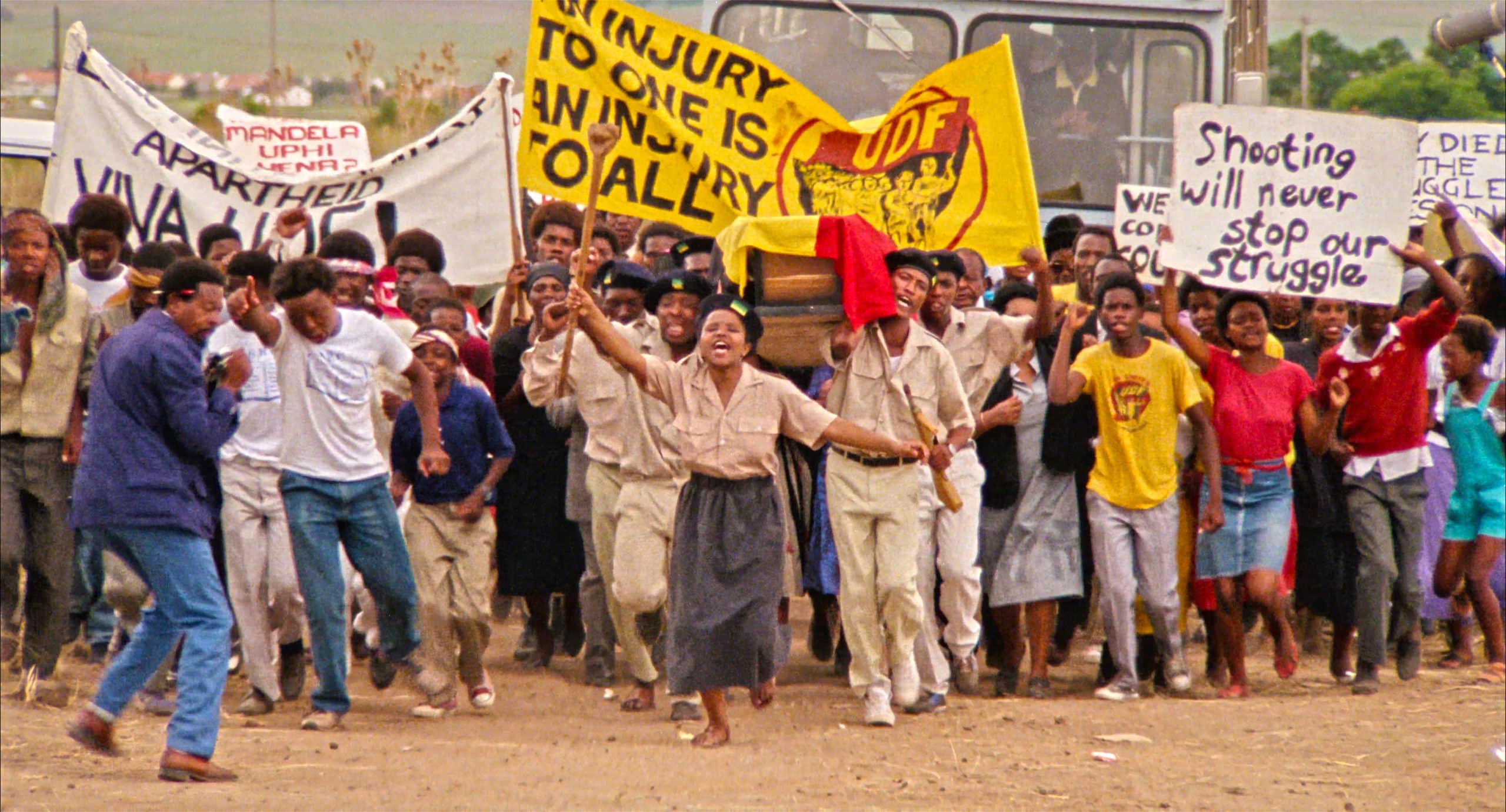The negatives of the 1988 anti-apartheid South African film, Mapantsula, lying in a basement for 35 years, have now been restored, to be unveiled at the Berlin International Film Festival next month. FORBES AFRICA speaks to director Oliver Schmitz about the technical process, its enduring relevance and bringing the film back to social memory.
Cut to the 1980s apartheid South Africa and a film released during that time.
Written by Oliver Schmitz and Thomas Mogotlane, Mapantsula debuted originally at the Cannes Film Festival in 1988, amassing worldwide acclaim.
Now, the 35mm negatives of the film have been restored to a 4k resolution by R3store Studios in London.
In 1988, the film-makers had registered it as an apolitical gangster movie in order to get it past the censor board. The apartheid regime’s Directorate of Publications made 17 cuts of 40 seconds before the film was publicized in South Africa.
Loading...
“I never cut the film. And we were completely against those cuts. I never approved or saw any version of the film in a cut form,” says Schmitz to FORBES AFRICA.
Key cast and crew members agreed to let the film be pirated on VHS, never earning anything on the African release, but the film was pirated and seen endlessly, he explains.
Recently, Schmitz decided that if he didn’t restore the film, it would either disappear or end up as a bad copy on YouTube. He invested his own money with Aaryan Trivedi, his partner at What The Hero Wants (WTHW).
Color correction, picture and sound processing were done at PurpleDOG Post, a post-production house in Canada, and original analogue audio tracks were enhanced and re-mastered. Final adjustments were made at Studio Mitte.
Schmitz spent a lot of time bringing the vibrancy of the color back from the faded film.
“So now with hindsight and a firmer grasp of the technique – and not changing it because it’s very important that the same film comes to life again – the color is much more intense. So I’m very happy about that.”
Arguably, the themes of the film remain relevant today; South Africa has a high crime rate, stark economic inequality, a legacy of enduring violence, employer-employee power imbalances in informal work, and police brutality.
Some would contend that poor black people remain second class citizens, and the film’s representation of how structural racism affects both the criminal and law-abiding person remains pertinent.
Out of interest, Schmitz has been asking South Africans of all ages to comment on how the film impacts them.
“What affirms my opinions in a way is that a lot of young South Africans watch the film, and it feels as relevant to them as it did to another generation back then… And publicizing some of that now, I think a lot of those issues are as valid as they were before, and [while] it is about this very specific time in South African history, the socioeconomic conditions – a lot of them are still very much there.”
Regardless of a change of system, he adds that the system the film explored remains in South Africa in many ways.
“We commented on this at the time, about these characters being agents in their own story; it was very important for us that this film is a celebration in a weird way, because it’s about resilience and about empowerment, and the characters are not an object, or pawn pieces on a chessboard to show how bad things are, in a sense of suffering.”
The main character Panic is an opportunistic, petty criminal who is caught between individual advancement and the social drive to revolt against apartheid’s injustices.
Schmitz says that while he’s not going to go into a justification of criminality, there’s always been an element where crime is a rebellion against a system and structure, and out of need as well.
The subculture of AmaPantsula developed in the 1950s, considered then in some quarters to be well-dressed “gangsters”. That idea has been debated, as the subculture has also been documented as a response to forced removals by the apartheid regime, according to Unlabelled Magazine in a 2019 article on The Evolution of The Pantsula Subculture.
“I think what it was then was very individualistic, and a kind of way of being a rebel. And what it’s now as a subculture of music and dance is something more communal,” muses Schmitz.
He says you can draw a thread through time in terms of music and style, with present Pantsula culture paying homage to the past, but he believes as a style and dance, it’s morphed into something else.
In terms of the technical process, he says he never would’ve imagined how much work it would be – with a negative in a basement for 35 years, and chemicals in film that are not static through time.
“There’s blotches, there’s streaking, scratching, there’s dust, there’s fading. The focus, which kind of disappears, it’s almost like memories fading, and you have to try and get all of it back,” he explains.
Schmitz recalls how Kodak film had pulled out of South Africa because of the sanctions, so the only stock left was a German high-speed stock, which was more light-sensitive but grainier. Pushing the film material resulted in more grain.
The restoration process made him want to cry, and alternately, sometimes he thought the product looked great. Along the way, there were several committed people who helped bring it back to life, he says.
“Maybe there’s lessons to learn for other films, and maybe for other South African films so that they don’t disappear. Because we live in a culture where anything that’s pre-digital, unless it’s pulled into the digital age, it will be out of the communal memory, it will stop existing because it’s not in our current world.”
The newly-restored film is set to be unveiled at the Berlin International Film Festival (Berlinale) next month.
Loading...
